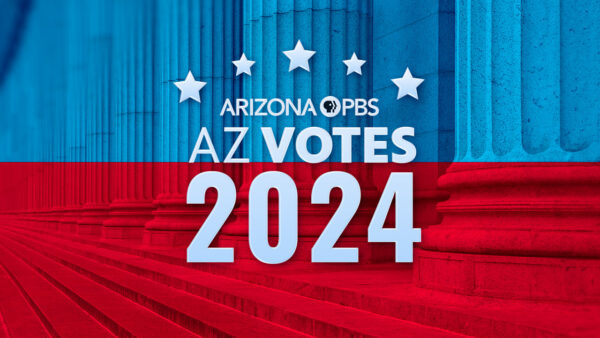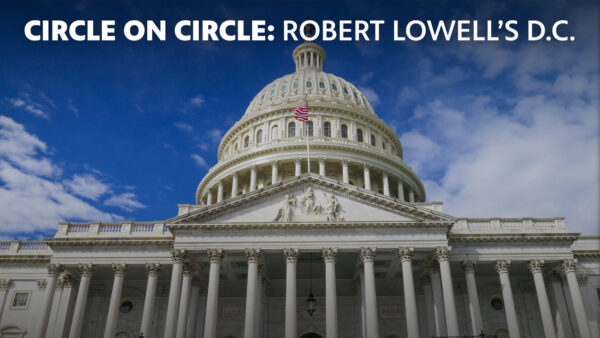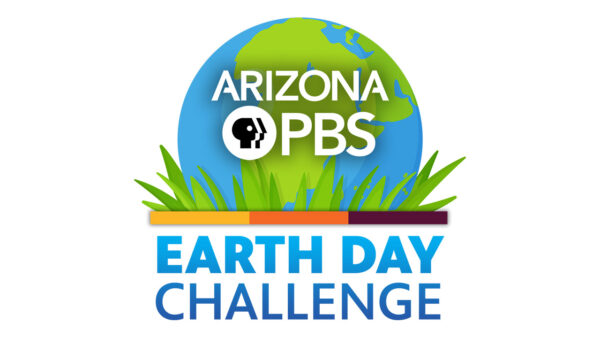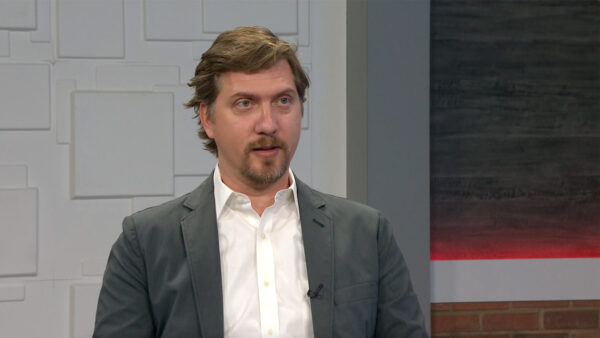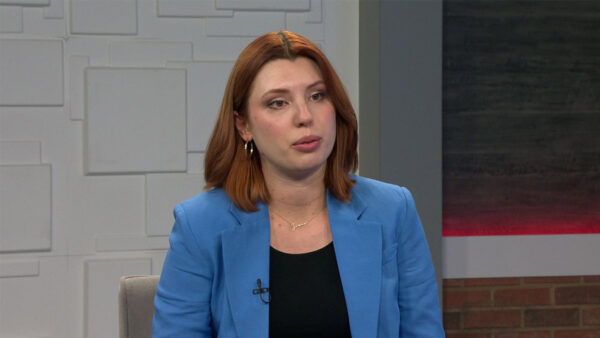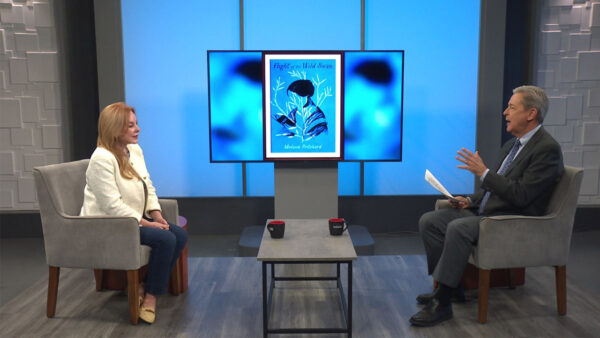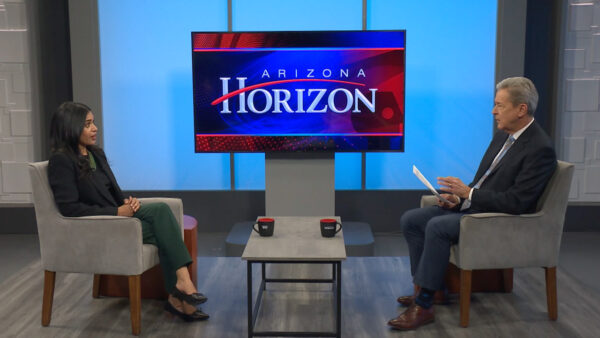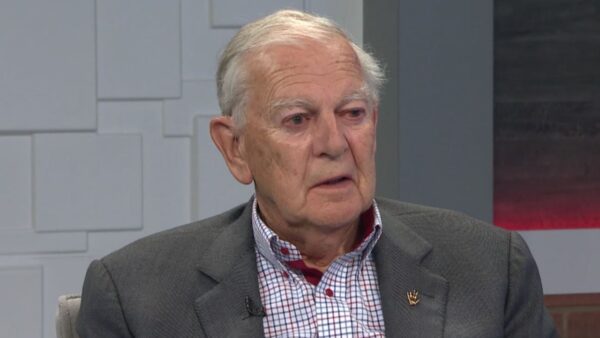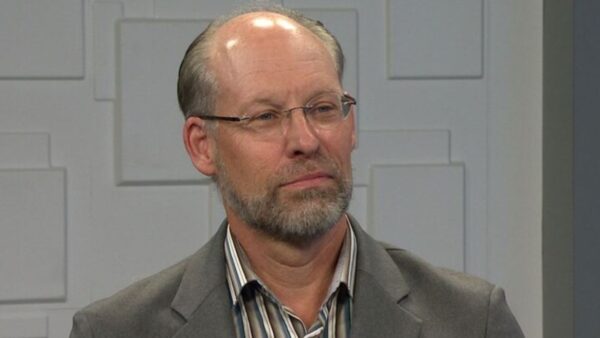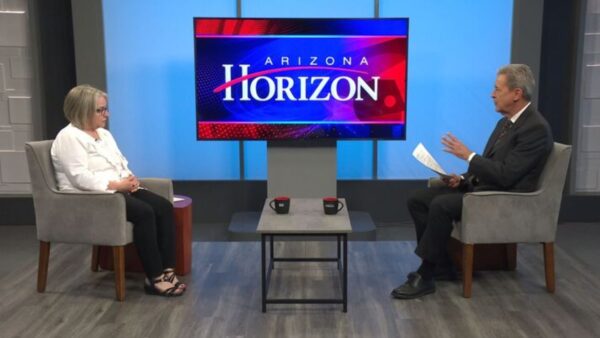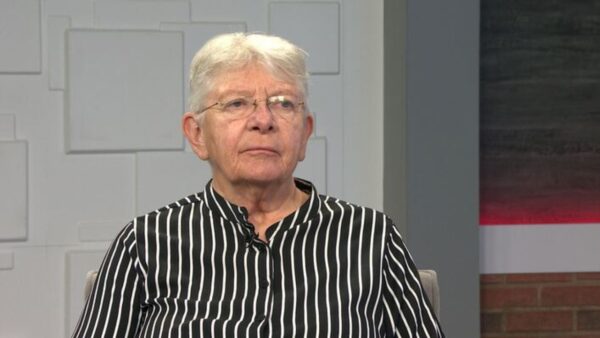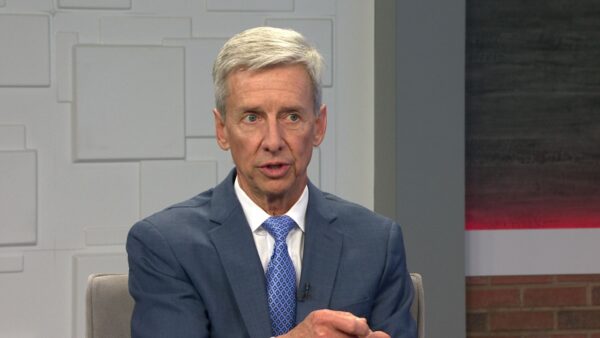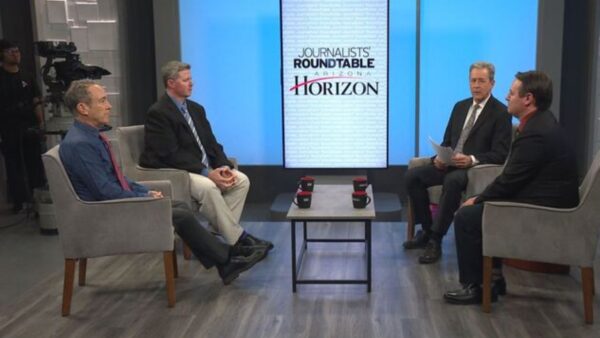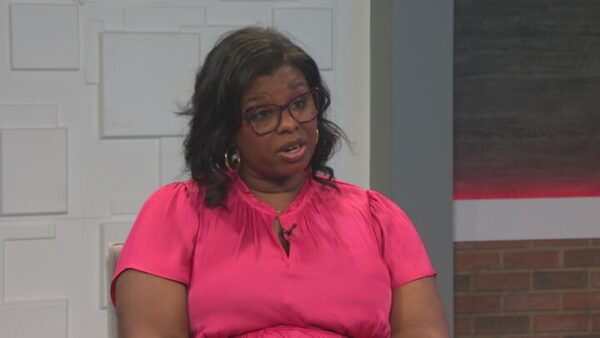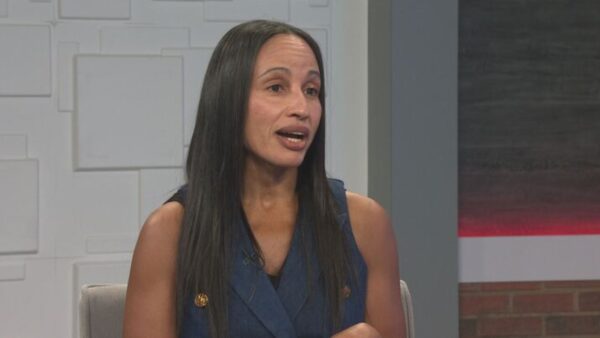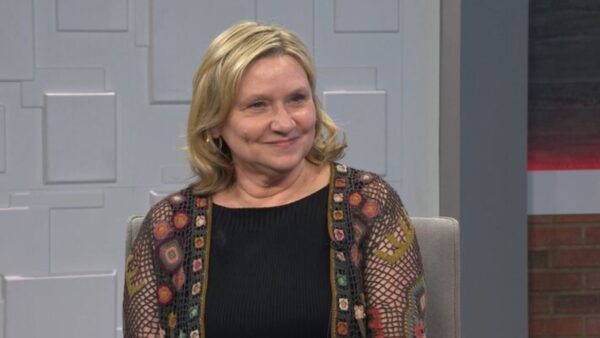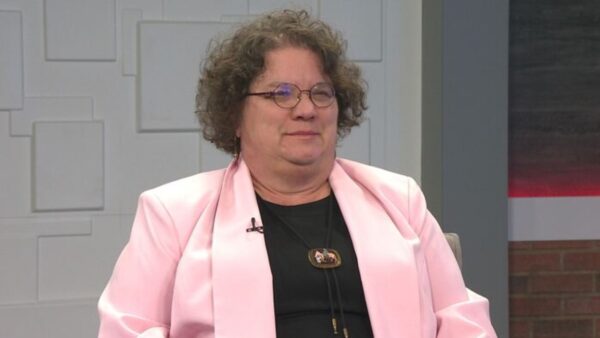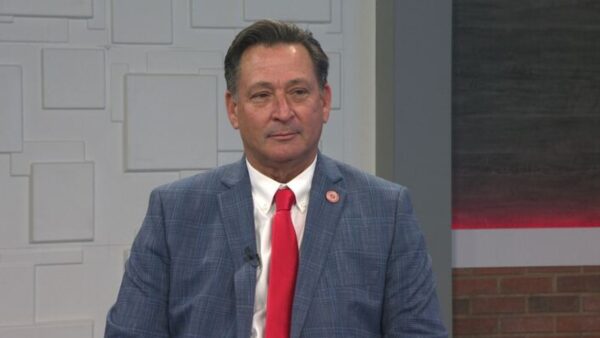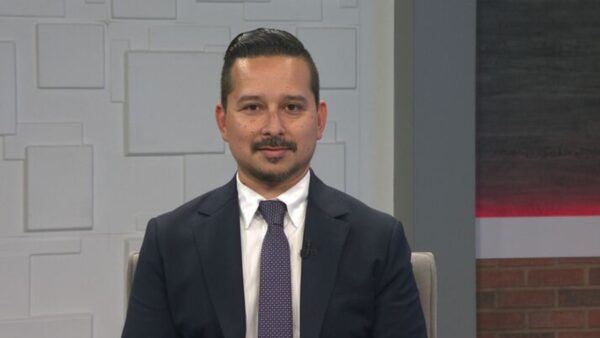The president of Northern Arizona University discusses the new Arizona Universities Network that will allow students to enroll in online courses from any of the Arizona state universities. Through this consortium, students will have access to nearly 1,500 online classes.
Michael Grant:
Tonight on Horizon, chilly temperatures have temporarily chased away the previous week's brown cloud --but a number of air quality advisories already this month marked the arrival of this season's brown cloud. Higher education is going online in a major way in Arizona. A conversation with the NAU president. Plus a step back in time--horizon in the eighties--and something called "space probe eight" those stories next on horizon.
Announcer:
Horizon is made possible by contributions of the friends of eight, members of your Arizona opinions station. Thank PBS station. Thank you.
Michael Grant:
Good evening, welcome to horizon, I'm Michael Grant.
Michael Grant:
The temporary disappearance of visible air pollution doesn't mean we are clear of future sightings of the valley's winter brown cloud. The layer of particulates that often blankets the skyline during the winter season will surely be back. Food for thought, perhaps, as you may be putting another log on your fire this chilly night. There are ways to reduce particulate matter in the air. Arizona department of environmental quality director Steve Owens joins me to talk about the region's air quality.
Michael Grant:
Not this week but last week was the brown cloud browner than usually?
Steve Owens:
Last week we had to issue four high pollution advisories in a row, which is the first time we've ever done that in the history in which we've been issuing high pollution advisories. We've done three in a row the previous years and we had three in a row previously this season. But last week's four in a row was a record so to speak. The good news is we don't have any high plugs advisories this week and we're not anticipating it. With the holiday week coming up with less traffic and so forth we should be pretty good going into the New Year.
Michael Grant:
I guess we can cross our fingers on this frisky El Nino which comes through in January, February, March. That's air movement you want to say.
Steve Owens:
That's right. Two problems we have here in the valley. One is a lot of people, a lot of activities whether it's through construction or home building, a lot of cars driving over the place which are not only putting out vehicle emissions but stirring up dirt and grit and things like that on the highways. A lot of landscaping people out there using the leaf blowers, blowing the dust around and blowing it back into the streets so the cars can churn it up. It goes on and on. That's been coupled with the fact that last year and this year we've been in an unusually prolonged drought. Last year we had 143-days in a row without measurable precipitation. This year something like 62 or 63 days. When you get drier conditions it makes things drier in terms of the dust that's being created. The fact you don't have much rain means you don't have much wind. You have a stagnant air mass hanging over the valley. All this stuff accumulates and hangs over the valley until something like rain happens.
Michael Grant:
In the weeks leading up to Christmas, is it a contributing factor at all that many people are maybe making more short trips than they normally were -- would idling the car in the parking lot as they look for a parking space at the mall, those kinds of things?
Steve Owens:
There's a little bit of that that does go on. Because you tend to see more people out in the middle of the day than you might otherwise see rather than going to work and trying to do things after hours while off. People are taking short breaks during the day and going around which creates more traffic congestion and jams in the parking lot and more cars stirring up dust. By the same token, it also gives us a bit of a break because it means that people are getting things done when we go into the holiday weeks, this coming week and the week after new years it means there won't be as much traffic out there that we might otherwise see.
Michael Grant:
When the air stagnation alert comes automatically do you go to a no burn day?
Steve Owens:
A couple of thing have happened when we issue a high pollution advisory. Maricopa County triggers enforcement of a number of its regulations, one of which is a no burn day.Can't burn a fireplace when we have a high pollution advisory. It triggers the mandatory trip reductions programs that major employers use. So there are a lot of things that go into the aftermath of a high pollution advisory to try to keep down not just dust levels but the other kinds of things like soot and carbon and things that come out of fireplaces.
Michael Grant:
Now, the valley unfortunately is expanding geometrically in all directions. Does the phenomena get bigger as well, the bowl?
Steve Owens:
That's the problem we have had. Where there has been a lot of work done since last year when we had all the high pollution advisories, we issued 25 in the last year which was more than in the previous ten years combined, there's been a lot of effort made to apply the regulations that Maricopa County came up with. The county's done a terrific job of trying to do with the construction industry to hold down duffle levels. But there's more people and more cars and more activity. Even though we're in a bit of a housing slowdown we're there's still a lot of housing and other commercial construction taking place out there. That's our problem is it's getting bigger and bigger as you said going farther and farther out. The old thing that is used to work don't work as well.
Michael Grant:
We're adding extra lanes to interstate 10 and 17. Maybe that will help. Steve Owens, A.D.Q. Director, thank you for the update. Merry and happy holidays to you.
Steve Owens:
Same to you, Mike.
Michael Grant:
The Arizona -- allows students to take online courses from any of the universities. Northern Arizona University has been charged with management of this consortium. Its president John Haeger it the president there.
Larry Lemmons:
I like to set the stage by talking about how there are obviously a lot of changes being made at the three public universities in Arizona. What do you think is causing these changes?
John Haeger:
Part of the changes are being driven by factors in the state. But there's also going on in this country in public higher education a massive revolution. We're only at the front end of that revolution. And I might mention just a couple of things that are at work. One is simply the funding for public higher education. The assumption that the legislature and the public will always fund higher education institutions is long gone in most states. And it's kind of interesting and ironic. At the very same time that that's happening, declining funding, there is a belief, really, that the state and public should hold institutions more accountable for what they do. And so you have a twin series of efforts now going on to look much more closely at institutions of higher education. Give you one particular example is -- hard questions are being asked after the spellings commission met at the federal level about why are graduation rates so low in most public higher education institutions? Why don't more students stay from freshman to sophomore year? And what is the role of research in all of our various institutions. So what happens at the federal level has really been transferred to the state.
Larry Lemmons:
But aren't you also under pressure from a rising demand for education in Arizona?
John Haeger:
Well, that's the other ironic factor. There's never been a time in which there is more demand for baccalaureate education. The assumption now really is that every student needs a baccalaureate degree to be successful in the 21st century economy. And that's going to put huge demand on our institutions. What's somewhat unique about Arizona is that if the number of students who leave high school and go to college would increase by 20%, you would see such demand that you would have to see even more expansion than we already have. Probably then look at additional campuses everywhere in the state. The fact of the matter is, in Arizona we don't have enough students going on to the university level, which leaves us short of skilled workers in the economy. And we live in an economy in which it's all about education and what level of education you have.
Larry Lemmons:
Well, we'll talk a bit about how you're trying to get more kids to actually go to college. But I want to bring you back to a point you made earlier about how you said the legislature doesn't want to fund higher education. And considering that the state constitution says education should be as free as possible. What sort of pressure is that putting on the universities, considering you guys are raising tuition?
John Haeger:
Actually I would argue that education in Arizona is as nearly free as possible. Right now among 50 public senior institutions in this country, I think Northern Arizona University is 46th in the tuition it charges. ASU is probably 44th. Arizona has tried to hold down the tuition increase as much as we can. But the reality is, in the absence of state funding, there are few other sources of money. And I think we live in a state which believes that users in this case the students, should bear some of the burden of a college-level education. Or their parents.
Larry Lemmons:
Or their parents in most cases.
Larry Lemmons:
Okay. So tell us about the Arizona University's network. I know that is one sort of project you guys are doing to help alleviate the problem of demand.
John Haeger:
You know, higher education can be accessed in a number of different ways. And accessibility is part of the challenge that three universities face right now. Obviously you see tremendous expansion of campuses. ASU, for example, is expanding downtown, has built out its campuses. NAU just recently established Yuma as a branch campus. But not all students can leave family and job and attend a campus. And so more and more we are trying to figure out what other methods can they access higher education? One of them that began about four years ago and went further back than that, the regents really decided they needed accessibility through either ITV and now the web. So Arizona Regents University was the first title. That was the regents trying to run an entirely web-based system. Eventually about four years ago they transferred that responsibility to northern Arizona university.
Larry Lemmons:
So you guys have been doing that for some time anyway, haven't you?
John Haeger:
Actually we have been doing it for a very long time. We think we have one of the best distance delivery they asked us to take over the efforts of the entire Arizona system. So we work with U of A and ASU in an effort to deliver as many programs as we possibly can fully on land. Or as often NAU does students can choose to take some courses online, some on-site at offices that we have all over the state. It's just another way for students to campus -- am pus a high quality -- access a high quality undergraduate education.
Larry Lemmons:
If a student at U of A or NAU can go online and take a class from other universities?
John Haeger:
Actually the logistics was not an easy thing to work out. Now it's known as -- a student can go to the website. They can access azen. They can see what's available at each of the three campuses and ultimately make their way from that website into northern Arizona University if that's their choice, or if they want to access a course or program at the University of Arizona, then they ultimately make their way to the University of Arizona. So that it has enormous potential for the future.
Larry Lemmons:
Here at ASU we're undergoing a lot of changes, a lot of building. I know up in flagstaff NAU has been situated there for quite some time. I guess they also are kind of limited about the amount of space they have. But what are you guys doing to change around the university and make it more accessible?
John Haeger:
We're doing a number of things. First is in terms of setting tuition. Northern Arizona University does try to keep tuition as nearly as free as possible. The same thing we're doing is literally we're in a massive rebuilding process for the Flagstaff campus. We really believe that we offer the most unique undergraduate residential education in the state. Students can come there. We want them to attend the campus and take classes in state-of-the-art facilities. That's a part of an undergraduate education. We want them to come there. And they have access to full-time tenure-tracked professors in the classroom and they have access to a full range of undergraduate programs. Over 100 undergraduate degree programs are offered on that flagstaff campus. We believe that will continue to grow over time as the Arizona population gross.
Larry Lemmons:
What is being done to try to get more high school students into college?
John Haeger:
Well, the key in my mind, the key educational issue in the state of Arizona is getting more high school students to both aspire to a baccalaureate degree and have the qualifications to -- qualifications to actually successfully pursue a baccalaureate degree. The governor's p-20 council in the state is very conscious the block often is math and science. So you'll see the p-20 council will recommend to the governor that students in high school take four years of math, that students in high school take additional science courses. There are two reasons for doing that, really. One is for the student themselves, although students won't think so at the start. These students have to go out and work in a 21st century economy. Math and science education in this state and in this country is woefully far behind other countries, including most countries in Asia and most countries in Europe. And so what really is happening here is we're trying to increase the pipeline that goes to an university. And then we can -- you look at economic development broadly? Then other companies are going to come into the state of Arizona. Because they know there will be an educated work force there. Right now we can't argue that.
Larry Lemmons:
Well, thank you, Dr. Haeger for coming all the way down from flagstaff to visit with us today.
John Haeger:
Delighted. Thank you.
Michael Grant: We're continuing to celebrate our 25th anniversary here on horizon. In late 1985 horizon viewers were treated to "Space Probe 8" schedule today coincide with the arrival of Haley's Comet. It took viewers to places few had ever been or seen.
Michael Grant:
Joining us this evening to show us how objects in space look to the astronomer using one of the world's largest telescope is Horizon's Rick Dolly.
Michael Grant:
Rick?
Rick Dolly: Hello, Michael. How are you?
Michael Grant:
Fine. I understand it's cold down there.
Rick Dolly:
Cold down there.
Larry Lemmons:
Four nights a week Rick Dolly took horizon viewers to space and beyond.
Dan Durrenberger:
Originally the idea was to provide some coverage of the pending arrival of Haley's Comet, which as I recall comes and visits every 76-years.
Michael Grant:
For those of you who have been watching our space probe 8 project over the past few weeks, you are no doubt well aware of our somewhat less than successful efforts to bring you a live glimpse of Haley's Comet.
Larry Lemmons:
While some attempts proved unsuccessful, overs allowed viewers to see a live image only allowed through telescope.
Michael Grant:
That's an absolutely amazing picture of the comet. Compare and contrast that to what we were looking at last month. That is much better.
Dan Durrenberger:
Probably the most unique thing about space probe 8 was that given the limits of microwave technology at the time, we were actually able to tap into the large telescope at the Kitt Peak National Observatory. And being the output of that telescope all the way back to phoenix -- beam it -- and feed it into our transmitter. You could sit home and turn on the television and see Haley's Comet in the Kitt Peak Observatory telescope. That was certainly something no one had attempted before.
Larry Lemmons:
With funding from KTAR radio and the greyhound bus company, horizon took viewers to Kitt peak in Tucson, the Lowell Observatory in Flagstaff, the jet propulsion lab in Pasadena, even the Smithsonian air and space museum in Washington D.C.
Rick Dolly:
To mark this event we are offering free of charge the booklet "Haley's Comet."
Larry Lemmons:
The funding also allowed for Horizon to give away thousands of books, calendars, even a space probe 8 patch.
Dan Durrenberger:
That calendar is hanging in a room off of my kitchen to this day. There were many books. There were space probe 8 patches. Anything that you could toss that logo on to and that it would stick to was duplicated en masse and made available to people.
Michael Grant:
Near mythical life and land of the cowboy are witnessed in a competition to black and white photography by Jay Dusard. A student of Frederick Sommer and Ansel Adams he has long -- as well as skilled teacher in his own right.
Jay Dusard:
Actually it was my first trip to this particular ranch, and I only took my smaller camera, the 4 by 5.
Jay Dusard:
Photography is such an amazing medium. It is capable of capturing an enormous amount of detail just sometimes in the fraction of a second. I mean, it has rendering power that no other art medium has. Those are the kind of things that excite me about photography.
Jay Dusard:
My name is Jay Dusard. I'm a photographer. And I live in Cochise County, Arizona, near the town of Douglas.
Interviewer:
How long have you traveled with the Guggenheim? Was it a month?
Jay Dusard:
Yes. I was shown the work of Aaron Siskin. And that was the trigger. That was what made me realize that I wanted to work in photography. Because what siskin was seeing in deteriorating urban landscapes was really pretty abstract expressionist images that I was dabbling in as a fledgling painter.
Jay Dusard:
I took up my own study of photography in the fall of 1965. There were some experienced photographers who were kind enough to work with me and give me advice and to critique my work. My main photographic mentor was the late Frederick Sommer, who lived in Prescott for many, many years. He, in fact, was the person that paved the way for me to be able to teach at Press College. But having access to this remarkable photographer was -- was the greatest gift of all. If I hadn't met Fred and he hadn't taken any interest in me I would not be a photographer now.
Jay Dusard:
Many years I've been interested in the cowboy west. It's got plenty of romance to it. It involves the partnership of people and animals, especially humans and horses. And the care of lifestyle. To me it's very important to honor the people that do this work, that live this life.
Jay Dusard:
In the fall of 1980 I applied to the Guggenheim Foundation to do a series of portraits of the working cowboys of western North America, from Canada down into Mexico. They thought that was a good idea, and they got behind me. I got the fellowship. So I traveled from British Columbia to Chihuahua all through the cattle country west. I met a lot of good people. I photographed a lot of good people.
Jay Dusard:
I've done my own dark room work forever since I started. Sometimes it's very intimidating. Sometimes working in the dark room or even approaching the dark room is -- I consider it to be psychological warfare. And sometimes -- sometimes I win the battle. Sometimes the print wins the battle.
Interviewer:
What's that?
Interviewer:
Julie Hagen. Wyoming?
Jay Dusard:
Yes. Wyoming.
Jay Dusard:
This is a tough image to do. In fact, I hope I never have to print one of these in the dark room again. Because my notes on what I need to do to balance this up is just very intimidating. You know, Carlos, he can isolate this particular area.
Jay Dusard:
Recently I have had the wonderful experience to collaborate with excellent digital printer. A gentleman whose name is Carlos Dietia. He can have them scanned and get them into the computer. With his expertise we sit down there together, come up with how this image should be expressed, how it should look.
Jay Dusard:
Technically, the big negatives make is possible to make huge prints with no lack of detail or there's no distortion. It's kind of a technical tour de force. But that's almost beside the point. I want them to be able to see like they're really communicating with the people who are kind enough to communicate with the lens of my camera.
Michael Grant:
To see video of this and other Horizon segments via the internet please go to the website at azpbs.org, click on horizon. You can also get transcripts and find out about upcoming topics on horizon.
Mike Sauceda:
Housing has slowed down in the valley and across the United States. Howl that affect the economy in 2007? And what did it do to it in 2006? Local economists will talk about the housing sector of the economy as well as the job market and other aspects of the economy in an economic update Thursday at 7:00 on horizon.
Michael Grant:
Thanks for joining us this Wednesday. I'm Michael Grant. Have a great one. Good night.
Steve Owens:Director, Arizona Department of Environmental Quality ;John Haeger:President, Northern Arizona University ;

